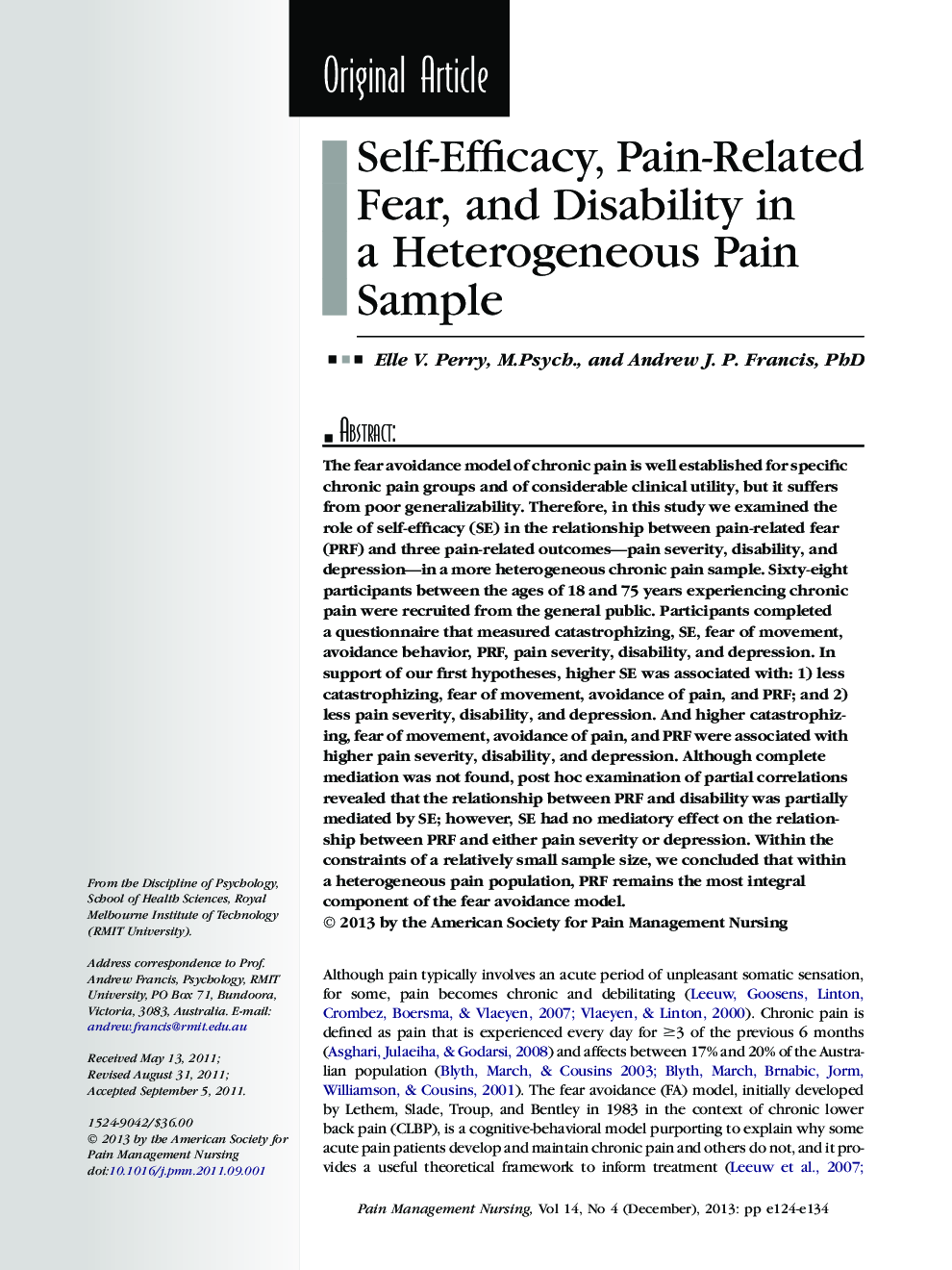| Article ID | Journal | Published Year | Pages | File Type |
|---|---|---|---|---|
| 2674669 | Pain Management Nursing | 2013 | 11 Pages |
The fear avoidance model of chronic pain is well established for specific chronic pain groups and of considerable clinical utility, but it suffers from poor generalizability. Therefore, in this study we examined the role of self-efficacy (SE) in the relationship between pain-related fear (PRF) and three pain-related outcomes—pain severity, disability, and depression—in a more heterogeneous chronic pain sample. Sixty-eight participants between the ages of 18 and 75 years experiencing chronic pain were recruited from the general public. Participants completed a questionnaire that measured catastrophizing, SE, fear of movement, avoidance behavior, PRF, pain severity, disability, and depression. In support of our first hypotheses, higher SE was associated with: 1) less catastrophizing, fear of movement, avoidance of pain, and PRF; and 2) less pain severity, disability, and depression. And higher catastrophizing, fear of movement, avoidance of pain, and PRF were associated with higher pain severity, disability, and depression. Although complete mediation was not found, post hoc examination of partial correlations revealed that the relationship between PRF and disability was partially mediated by SE; however, SE had no mediatory effect on the relationship between PRF and either pain severity or depression. Within the constraints of a relatively small sample size, we concluded that within a heterogeneous pain population, PRF remains the most integral component of the fear avoidance model.
